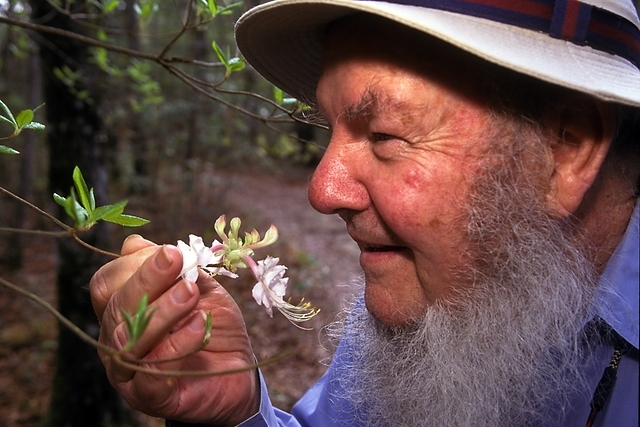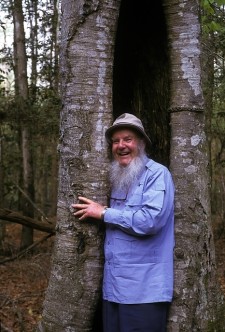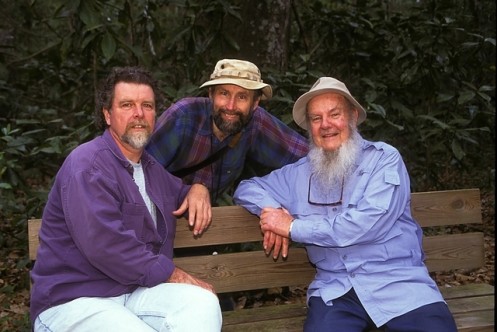[Note from Christopher: During the summer of 2011, I was contacted by an editor representing a new online web magazine (e-zine) dedicated to noir fiction and asked to contribute an essay for its debut issue. The e-zine will remain nameless, for what happened next became a disaster. I wrote the essay as requested, and the editor’s boss, the head honcho editor, said it was too long. I cut it to the new length requested. Then, a day before the debut issue was hitting the World Wide Web, it occurred to me they had not sent the final edited version for me to see, per our agreement. So I asked to see it. And fell out of my chair when I did. It had been cut to half its length, maybe less, and not very well. It read like the author (me) was suffering from some sort of brain disorder. A flurry of heated emails ensued between me and the editors. In the end, I pulled the essay from the e-zine, told them they could not use it. And learned a lesson about doing business with folks I don’t know. So this is the first time the essay has been published, right here on my website. It’s debut! Finally. As for its theme, well, my interest in ethics and law—especially where the two diverge—is what I chose to explore, within the context of noir fiction.]
During my adolescent years, I came to believe that to live an honest life—meaning an ethical life—you’ve got to break the law. The notion seemed profoundly true to me then. In truth, it still does.
It occurs to me now that many a fine book has been made off the same idea. And so has many a crime.
Victor Hugo explored that terrain in his great novel Les Misérables. A man steals a loaf of bread to feed his starving family and spends 19 years in prison for it. Upon his release, he goes straight but is relentlessly pursued by an obsessed police detective. Clearly, this is a story with a twist, one in which the apparent criminal is actually good and the so-called good guy very bad.
I read that book when I was 16 or so. Shortly before, I’d read Sinclair Lewis’ Babbit, in which the main character, a respectable businessman and booster of civic virtues, is beneath his facade a morally corrupt hypocrite.
And having grown up in a family of charismatic Bible-thumpers, I was teethed on the story of how the Son of God Himself got nailed to a cross because he was so honest and true that the legal powers-that-be couldn’t put up with him.
I daresay all those stories made an impression on my adolescent person, and the lessons I took from them were not those intended by my elders. But I couldn’t help it. It seemed plain as day to me: the law is corrupt; the law has little to do with ethics; the law is essentially a criminal enterprise.
Looking back at that time helps me better understand why I sometimes write fiction that gets marketed as crime fiction in the U.S. and noir in Europe, especially France. (Though the very same book may get classified as thriller, suspense or mystery, depending on who happens to be doing the labeling that day in that mysterious place, location unknown, where books get categorized for market.)
This is a good moment to acknowledge that no one has a precise definition for what noir is or what it means. As a term, it is procrustean. Some call noir a style, others a mood. Some make up detailed lists of what must occur for a work to be called noir. But all such efforts to define the term fall short. In the end, it’s probably not definable, and I am reminded of U.S. Supreme Court Justice Potter Stewart’s famous statement about pornography: “I can’t define it. But I know it when I see it.”
Though its meaning is slippery we talk at length about noir all the same. And for good reason. Noir fiction and film, when done well, burrows beneath the surface of convention. It reveals the hypocrisies we endure, the falsity of public norms, and the corruption we suspect lurking not only within our civic institutions but inside each of us individually. As such, noir is highly dramatic and deeply personal. Inadvertently, it also serves as social commentary.
One particular reason I like reading and sometimes writing noir is that it spotlights the fact that ethics and law are two very separate matters. Each supposedly leads to a common goal but often they are in conflict with one another. And sometimes both systems seem moribund, each of them so crippled by irrelevance to the needs at hand that they create more conflict than they resolve.
In any good work of noir, that conflict appears in a personal way. A noir novel isn’t overtly sociological, not the way a novel by Dickens or Zola is. Instead, it often explores the breakdown of ethics and law, or the conflicts between them, through the point of view of a character who has internalized the conflict and explicitly feels torn about what to do. Like Shakespeare’s Hamlet, the protagonist in Cain’s Double Indemnity suffers from indecision and self-doubt even as his irresistible impulses drive him toward a tragic end. That makes it mainly a dramatic work; the sociological critique is implicit. (It’s no surprise, then, that what we now call classic works of film noir from the 1940’s-1950’s were simply called melodramas when they were made.)
That ethics and law are two distinctly separate matters seems so obvious you’d expect most people to routinely acknowledge it. But most of us don’t, because most of us rarely think about it. It’s true that recent events in global finance have caused more people than usual to notice the divergence between ethics and law. Americans who watch Wall Street gangsters rip off the public trust and laugh all the way to the bank (often a bank the thugs manage) aren’t sure how to react. After all, what these thieves are doing is completely legal. But ethical? Well, they’re slimy bastards and we all know it.
So much for the law. For that matter, so much for ethics. Both systems are intended to help us struggling humans resist our atavistic biological impulses and behave according to rules and principles that support social cooperation and trust—what we commonly call civilization. But we all know from history, and too often from personal experience, that the collective project we call civilization is a tough uphill grind. We strive, more or less, to achieve it. And we routinely fail.
Sometimes the breakdown is huge. War, for instance. Or a country falling prey to criminal cartels. Or being torn apart by fundamentalists, religious or political. Or an entire economic system being brought to its knees by the greedy self-interest of a few. Such general breakdowns in ethics and law create widespread distrust of the institutions that supposedly support them. People become more cynical. They become more anxious. And much, much angrier. They start to believe that justice can be achieved only by taking the law into their own hands. In other words, that justice requires breaking the law.
So it’s probably no accident that the roots of noir fiction in the U.S. go back to the era of the Great Depression, a time when the Average Joe and JoAnne were getting royally screwed because the controlling elite—acting legally but outside all ethical bounds—completely broke the economic system. During the 1930’s, millions of ordinary folks were jobless, homeless, and hungry. And the rest worried they might be next. Civilization, such as Americans knew it, hung in the balance.
That prolonged crisis highlighted the difference between the rich, who mostly remained rich, and ordinary folk, who suffered mightily. In places like Philadelphia, people were stripping bark off neighborhood trees to boil and eat. The era ushered in a great deal of class conflict on the social level and personal anxiety on the individual level. People were frightened. And very pissed off. They were angry enough to celebrate bank robbers like John Dillinger and revere Bonnie and Clyde as folk heroes. Woody Guthrie’s “The Ballad of Pretty Boy Floyd” (1939) offered sentiments like, “As through this world you travel, you’ll meet some funny men / Some will rob you with a six-gun, and some with a fountain pen.”
Clearly, the established order had broken down. The country’s institutional authorities had been discredited. Alienation from the law became commonplace. Moral ambiguity ran high.
And so entered from stage left—or maybe it was right—the early expressions of what we now call noir. It was not then considered high art. For that matter, it still isn’t, except for a few aficionados of the genre. But it sure remains popular with readers and moviegoers and commercially appealing to publishers and filmmakers. In recent years, the noir style has found a place in TV, too, given the creative opportunities offered by less censored cable TV channels.
A lot has been written about the development of noir in the U.S. By that I mean the way early hardboiled fiction led to noir fiction and film noir. Individual isolation and alienation, existential anxiety, atavistic aggression and violence as a coping strategy within the framework of social and class conflicts—exploring those themes exploded during the 1930’s in the hardboiled crime and detective fiction of writers like Chandler, Hammett and Cain.
A decade later, Hollywood was in the same game with film noir, its movies based on those earlier groundbreaking writers—The Maltese Falcon (1941, based on Hammett’s 1930 novel), The Postman Always Rings Twice (1946, from Cain’s 1934 novel), and so on. That’s a history we all know.
Those who dial down the microscope to look more closely observe that the fiction of Cain (and of others like Cornell Woolrich and W. R. Burnett, both relatively unknown nowadays) was distinctly different from the work of writers like Chandler and Hammett. They all worked in prose styles that were lean, gritty and often bleak. But the Chandlers and Hammetts arguably led to later writers like John D. MacDonald and Robert B. Parker, whereas Cain’s offshoots included Jim Thompson and Donald Westlake (writing as Richard Stark).
So that’s where and when the tree forked, we are told, with crime/detective fiction headed in one direction and noir fiction in another, with a main difference then and now being point of view. The first school of writers mostly features tough detectives, private or public, who nowadays reveal a sensitive side, at least in their relations with women. Whereas the second group often writes from the perspective of criminal perpetrators (and sometimes victims), and sex relations focus more on glands than sensitivity. In short, crime fiction generally focuses on the POV of cops and private dicks, and noir fiction more often focuses on the flip-side POV.
And some writers do both, making them satisfyingly difficult to categorize. This happens to be the group I like best, and covers a diverse range of writers, from Elmore Leonard to James Ellroy. It’s a group I happily joined when I published my first novel, Robbers.
Of course, one thing all these writers focus on is violence, a theme that Americans seem nihilistically addicted to in their entertainment, whether it’s books, movies or television. In this regard, however, crime fiction and noir no longer rule the roost. With a few exceptions—I think of pulp romances—violence has become compulsory in almost all our popular entertainments, and the darker and more brutal the better. Hannibal Lecter is now just our average middle-of-the-road culprit, if not the outright protagonist.
Which leads us back to the tension between ethics and law. Have the two diverged so much in our current era that large numbers of people find it impossible to live according to both? Do we once again believe, as we did during the 1930’s, that the law is essentially a corrupt tool of the wealthy and powerful? Are the Average Joe and Joanne ready to embrace new incarnations of Pretty Boy Floyd and Bonnie and Clyde?
I don’t think we are collectively quite there yet, at least not in the U.S. and Europe. People in some places, such as Mexico with its drug cartel heroes or Somalia with its sea pirates, certainly are. But I suspect the rest of us will be joining them soon. I think the distrust of large institutions—civil ones like government, economic ones like banks and big business—is now running so high, and those same institutions are so broken, and ordinary people so alienated from them, that we are entering another period when the law will be seen as enemy as much as protector. The social contract is breaking, and it’s about to go kaput. Yet again.
Well, you say, that’s an awfully dark view. Yes, it is. I heartily agree. But I also foresee a fertile time for noir. A prime time. I see a great future for the genre.
I don’t think it will be the same as almost a century ago, however, when noir was born in its modern manifestation. History does tend to repeat itself, but with variations. For instance, I expect the noir point of view to find full expression in television, which after all is a kind of digital form of pulp fiction: relatively cheap, quickly produced, a disposable consumer product. Cable series like Breaking Bad and The Wire are taking us there.
On the literary side, I see the cutting edge of noir appearing in new genres. I already see its influence in fiction like that of William Gibson and his cyberpunk offspring, a kind of Blade Runner style in print—or, increasingly, the digital e-book medium.
However it develops, I think noir will continue to explore the notion I mentioned in my opening. That is, to live an honest life you’ve got to break the law. In traditional crime fiction, the good guys are basically good and the bad guys basically bad. But noir recognizes an essential truth: the conflict between good and bad, between legal and criminal, is in reality a conflict festering in the heart of every single one of us. That ongoing eternal struggle is a drama—a personal melodrama—we all experience.
And which side wins out, when it could go either way, makes for a story well worth telling, and one we desperately want to hear.
*****





![ala-coush.res.dancers.mac[1]](https://www.christopher-cook.com/wp-content/uploads/2011/12/ala-coush.res_.dancers.mac1_.jpg)
![woodville-indian-chief-1[1]](https://www.christopher-cook.com/wp-content/uploads/2011/12/woodville-indian-chief-11.jpg)